Author: Andrew Cherrie | SEO and Content Lead
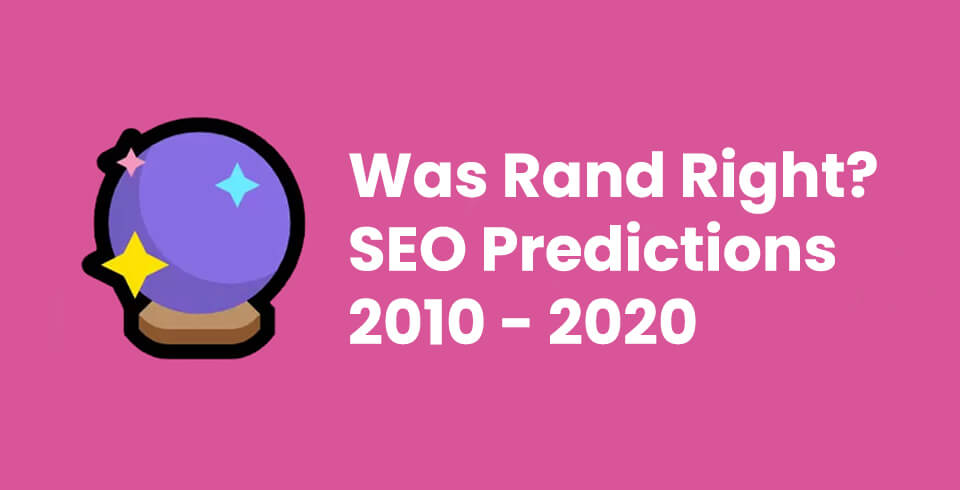
It’s been over ten years now since SEO royalty Rand Fishkin made 8 predictions for SEO on the Moz blog.
A lot has changed in the decade since, both in SEO and in the real world.
There have been plenty of surprises.
Britain voted to leave the European Union, Donald Trump became president of the United States and England even managed to reach the semi-final of a World Cup.
We saw plenty of twists and turns along the way as far as Search Engine Optimisation is concerned, as well.
Did Rand foresee any of them back in 2010? Was he a Mystic Meg or a mega pretender?
Let’s have a little look.
#1 – This Real-Time Search Thing is Outta Here
Rand wasn’t happy about the integration of ‘real-time’ results in the SERPs, particularly the latest tweets on a topic appearing in what we now call Position Zero.
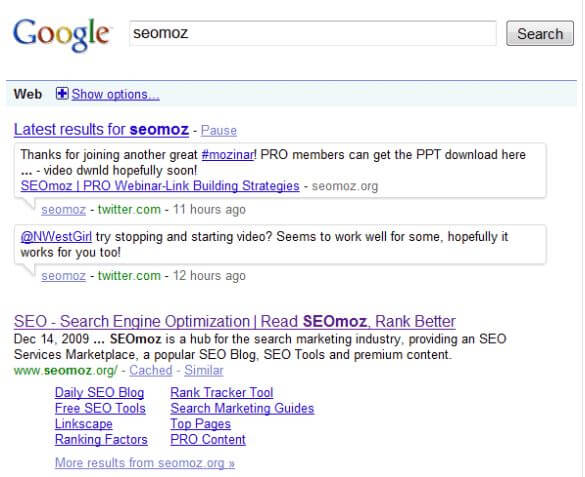
Prediction
“If you want to rank #1, don’t worry about quality content, relevance or popularity, just be the last person to Tweet about a topic and you’ll come out on top (at least, for a few seconds).
This is, in my estimation (and many others), the worst implementation of new results Google’s ever implemented.”
Eeeeek. He really wasn’t happy about it.
Luckily, though, it looked as though the feature wouldn’t be hanging around for much longer. Or so he thought.
“In 2010, I think this fades away. Perhaps not entirely, but we won’t be seeing it for nearly as many queries with the prevalence we do today.”
What actually happened
In 2015 Google confirmed that they were displaying tweets as part of search results across both desktop and mobile. It’s hard to imagine the SERPs without them now.
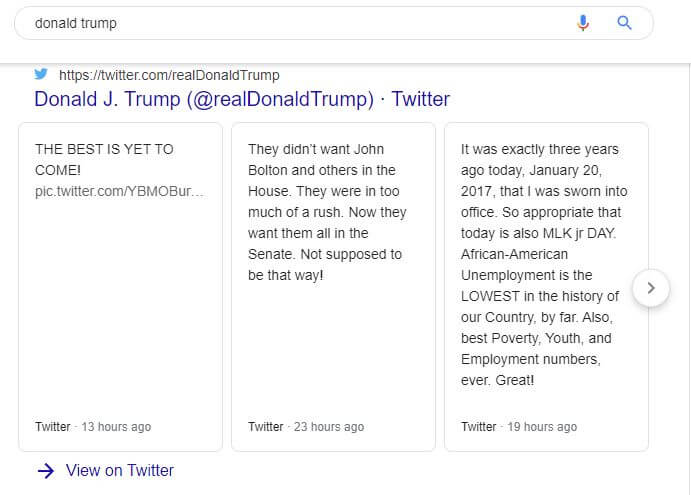
For better or for worse, tweets are now a vital component of an increasingly-busy results page, with Wikipedia and YouTube also being given their own piece of prime Google real estate alongside a whole range of featured snippet and knowledge graph data.
Crystal balls (out of 10)
🔮🔮🔮🔮🔮
#2 – Twitter’s “Link Graph” is the Real Deal
As Twitter started to challenge Facebook for social supremacy, online marketers and SEOs in particular started to sit up and take notice.
It was around this time that content producers began to use social shares as a key metric in assessing their content’s performance.
Prediction
Back in 2010, Rand thought that links in tweets would become a ranking factor themselves:
“SEOs want to turn tweets into links so they can get SEO benefit. My feeling is that tweets are going to carry their own weight in helping pages rank in the not-too-distant future.”
What actually happened
That probably wasn’t a bad prediction, but it depends on who you talk to about it.
Debate still rages as to whether social signals actually have a direct impact on rankings. Google themselves say that social engagement isn’t a ranking factor.
Not long after Rand’s initial article, Matt Cutts from Google released this video on the very same topic.
On the other hand, plenty of studies have shown a correlation between the number of social shares and ranking position. There’s no doubt that the two go hand-in-hand, but this looks more like a classic case of correlation, not causation.
If thousands upon thousands of people discover your content piece on social media, there’s bound to be one or two who see it as an authoritative source and decide to link back to it from their site.
With that in mind, it’s more likely that the links acquired as a result of social shares are what “carry their own weight in helping pages rank”, not the tweets themselves as Rand suggested.
Crystal balls
🔮🔮🔮🔮🔮🔮
#3 – Personalized Search is Here to Stay
As the decade drew to a close in 2009, Google rolled out one of the most momentous updates we’d ever seen.
Previously, search results were the same for everyone searching in the same country and the same language.
Personalized search meant that two people could search for exactly the same thing and receive two entirely different sets of results, based mainly on their previous search history as well as location and language.
That had big implications for SEOs and how they view the concept of rankings.
Prediction
“If you rank well, and earn solid traffic, you’re going to be even harder to unseat. Startups and upstarts are going to have an even greater uphill battle to climb than before.”
“Rank tracking may still carry some value to understand how non-personalized searchers see your pages, but that data is going to be less useful in comparison to what your analytics report about search traffic and the trends”
What actually happened
Search results in 2020 are personalized like never before.
Hyper-localized results are served up as Google is able to pinpoint your location with great accuracy.
Someone searching for ‘coffee’ on one side of town will be given a totally different list of cafés to someone making the same search a couple of miles away.
Google insists that search history doesn’t play a huge role, though, despite a 2018 study by competitors DuckDuckGo showing that ‘filter bubbles’ were very real.
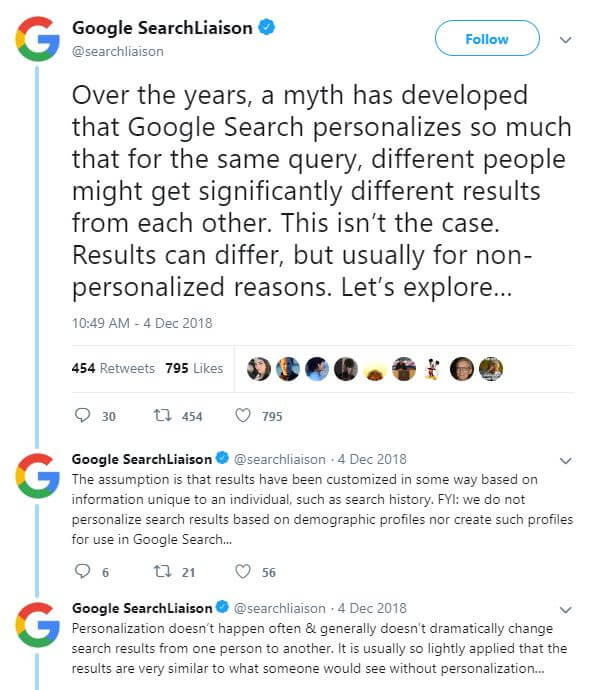
Hmm. As always, it’s best to take any official Google communications with a pinch of salt. If giving different results based on location isn’t personalization, then what is?
To test this ourselves, I asked my team to help me run a little experiment. Five of us each searched for ‘restaurants Wakefield’ from the same location, using our mobile data and a browser that wasn’t set to incognito.
The top 3 local pack results for each of us varied hugely. Only 2 of us were given the same restaurant, while results seemed to be based on places we’d been to or searched for before. The closest restaurant to the PAB Studios office appeared only once across all the searches.
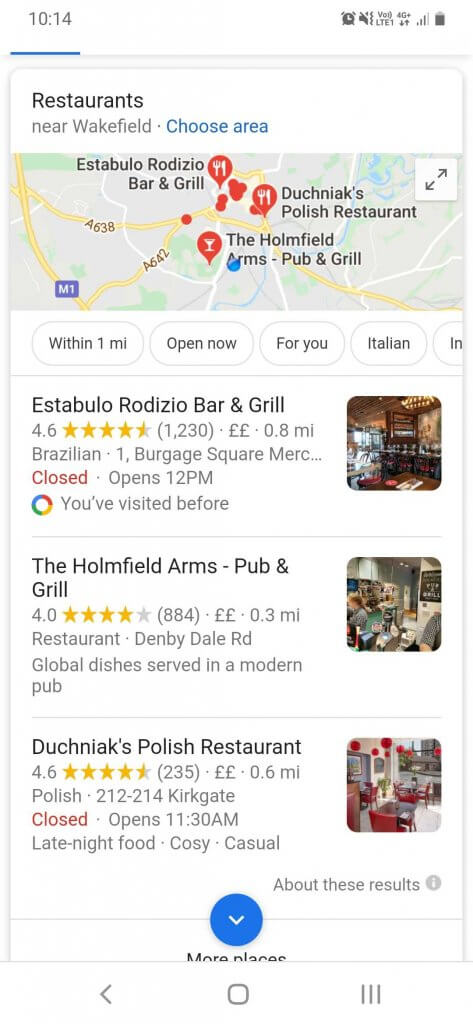
*DISCLAIMER: please try Corarima if you, for some strange reason, ever find yourself in Wakefield.*
As far as Rand’s prediction for rank tracking goes, the tools we use have adapted to changes in the search habitat but still only provide us with a generalised overview of where our sites are ranking for a given keyword.
We can never know precisely where a page ranks for a query for any given searcher.
Rand was right to say that traffic and user metrics would be a better indicator of search behaviour than plain old rankings.
He was also pretty spot-on to say that established sites which already see solid traffic would be harder to displace.
Crystal balls
🔮🔮🔮🔮🔮🔮🔮🔮
#4 – It’s Going to Be a Two-Engine, 80/20 World
Google hasn’t always been quite so dominant as it is now.
Back in 2009, Google had a 65% global market share for searches while Bing and Yahoo divvied the rest of the spoils between them.
Rand thought Google would grab a bigger slice of the pie in 2010.
Prediction
“I believe that a year from now, most webmasters will be looking at a scenario where Comscore/Hitwise reports Binghoo! has ~25-28% market share, but those engines combine to send a little under 20% of all search traffic”
What actually happened
Not quite 80/20, but not far off. Try 93/7 instead.
Bing and Yahoo maintained a strong presence, in the United States at least, until around 2012. From thereon in, though, it was all about Google.
The latest global figures from StatCounter for December 2019 show just how dramatically things have shifted towards total dominance.
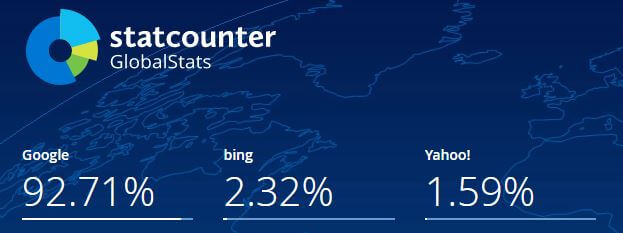
Crystal balls
🔮🔮🔮🔮🔮🔮🔮
#5 – Site Explorer & Linkdomain will Disappear
If you were in the SEO game in the first decade of this millenium, you’ll remember it.
Assessing backlinks back in the day was a lot easier with tools like Yahoo’s Site Explorer. It offered a full backlink report for any given site, free of charge.
All you had to do was use the ‘linkdomain’ command and enter your URL.
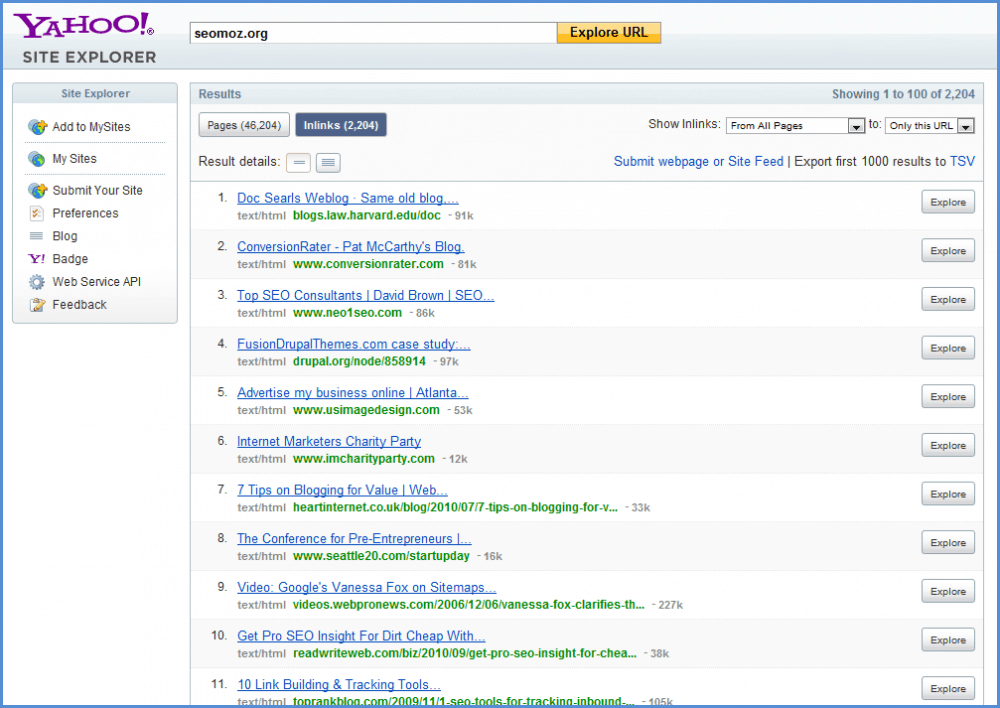
Prediction
Rand thought the writing was already on the wall for Site Explorer.
“Tragically, everything I hear out of Yahoo! and Bing is that Site Explorer is off to the great beyond.”
“I’m guessing other services will rise up to try to take Site Explorer’s place, as the service had millions of monthly queries run against it.”
What actually happened
Yahoo Site Explorer officially shut down in November 2011.
As Search Engine Watch put it:
“The companies that sell this information as part of their marketing tool platforms must be jumping for joy because there really is no longer a free alternative.”
Too right. The closure of Site Explorer paved the way for a plethora of paid backlink tools to hit the market.
You’ll be hard pressed to find any SEO nowadays who doesn’t pay for such a tool.
Some free alternatives like SEO Review Tools and recently ahrefs offer some free backlink data, but they’re usually limited in the number of results they give and are often outdated.
Crystal balls
🔮🔮🔮🔮🔮🔮🔮🔮🔮
#6 – SEO Spending Will Rise Dramatically
Although a lot of businesses were aware of the value of SEO back in 2009, there was still a reluctance to commit a good slice of the marketing budget towards it.
Spend on SEO was massively outweighed by spend on Paid Search, as highlighted by a study Rand cites. In 2009, businesses in the US were spending around $2,456 a year on SEO and $12,937 a year on PPC.
Prediction
“We’ve still got a long way to go before balance is established between the share of clicks SEO commands and the fraction of spend it receives, but the gap is slowly closing.”
What actually happened
A recent report from Backlinko suggests that the average American small business spends just under $500 (£380) a month on SEO services. Around 2% of businesses spend over $25,000 a year on SEO.
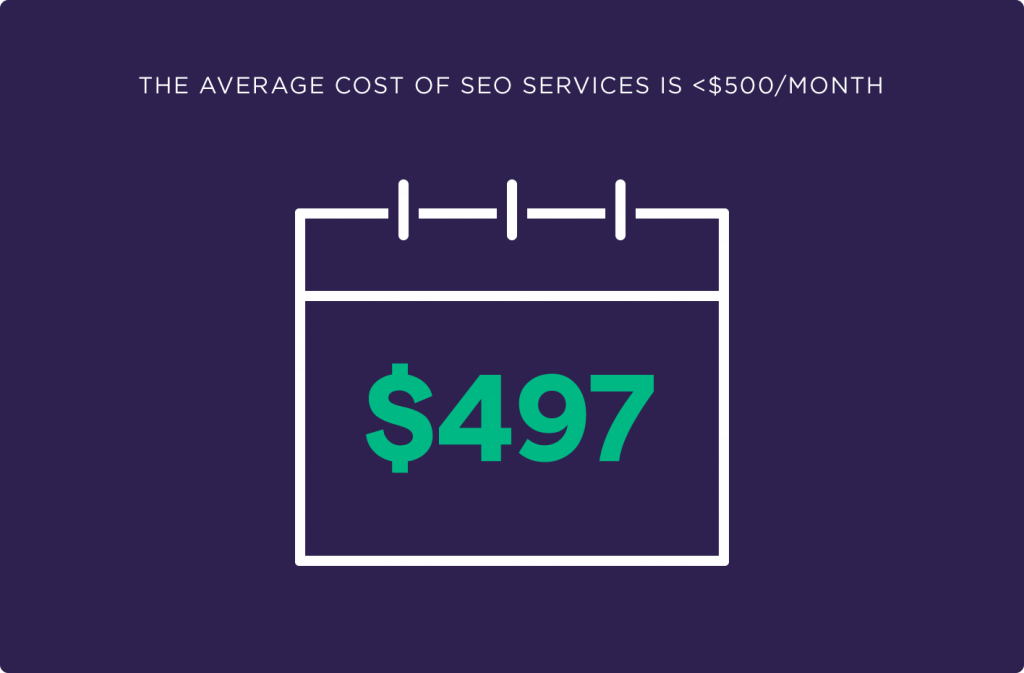
Unsurprisingly, client satisfaction was found to be tied directly to the amount spent each month. Those that forked out under $500 a month were significantly less satisfied with their SEO provider than those that spent over $500.
When it comes to search expertise, you really do get what you pay for – and we’re spending a lot more than we used to.
Crystal balls
🔮🔮🔮🔮🔮🔮🔮🔮🔮
#7 – 2010 is the Year of Conversion Rate Optimisation
Nowadays we have tools, people, departments, and even whole companies devoted solely to Conversion Rate Optimisation.
In 2009, however, we weren’t so hot on the concept or the great returns it could bring us.
Prediction
“If I were doing another startup today, it would focus on software for conversion rate optimisation. I think this is still the most under-utilized and highest ROI activities in the marketing department, but more awareness is on its way.”
What actually happened
No good marketer worth their salt would even dream about implementing a major change to their site without a bit of A/B testing first.
Conversion Rate Optimisation is big business in 2020 – just have a look at how many companies are looking for CRO specialists.
Crystal balls
🔮🔮🔮🔮🔮🔮🔮🔮🔮
#8 – More Queries will Send Less Traffic
In 2010 we were just getting used to having our queries answered instantly.
Google began showing information related to a query on the SERP itself, rather than forcing the user to click through the results to find what they were looking for.
That, of course, would have big implications for sites which were built around providing the kind of information that Google can provide in an instant – like sports results, weather forecasts, and currency exchange rates.
Rand was pretty impressed:
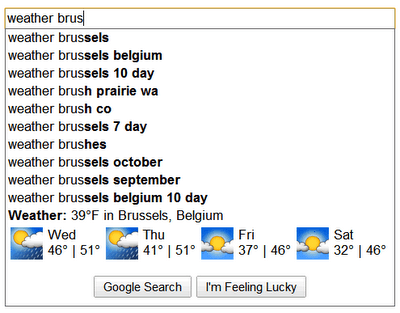
“I don’t even have to complete my query! Google’s got that weather report sitting in the suggest box.”
Prediction
“My perception is that the more the engines can apply “instant answers” to search queries, the more they will, and the less any other sites will see traffic from those queries. It’s a better user experience this way, and I’m certain it’s one of the biggest things that engenders loyalty and return queries.”
What actually happened
Rand didn’t know it at the time, but he was talking about zero-click results. He picked the concept back up in 2019 when he found that less than half of all Google search results now result in a click.
Googling is a different beast now compared to 2010. We ask. We search. We find.
We’re not so bothered about where we find what we’re looking for, so long as we can find it quickly and easily. We have faith in Google to provide us with results which are safe and trustworthy.
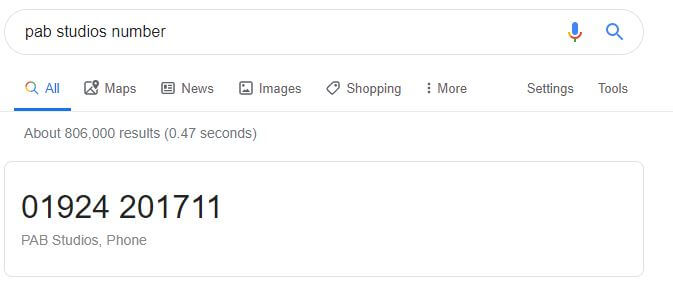
See. No need to click through to another page!
Optimising for zero-click has become a priority for SEOs. That’s resulted in a huge shift when it comes to the content we’re producing.
Somewhat contradictorily, we’re now more focused on satisfying the user rather than the search engine.
Answering queries precisely and accurately gives us the best chance of grabbing the coveted Position Zero. Writing overly-optimised headers and copy to target certain keywords – pleasing Google, rather than the user – is no longer as effective as it once was.
More queries do indeed send less traffic, and it’s the end user who benefits.
Crystal balls
🔮🔮🔮🔮🔮🔮🔮🔮🔮
Predict a brighter SEO future
Looking for a better forecast when it comes to organic traffic? Get in touch about our SEO services today.